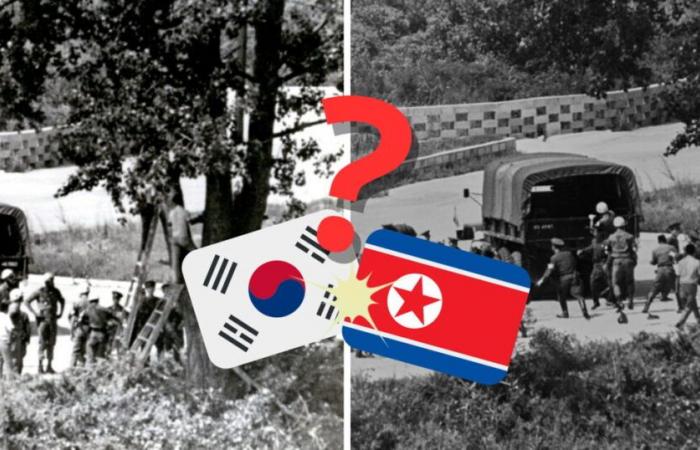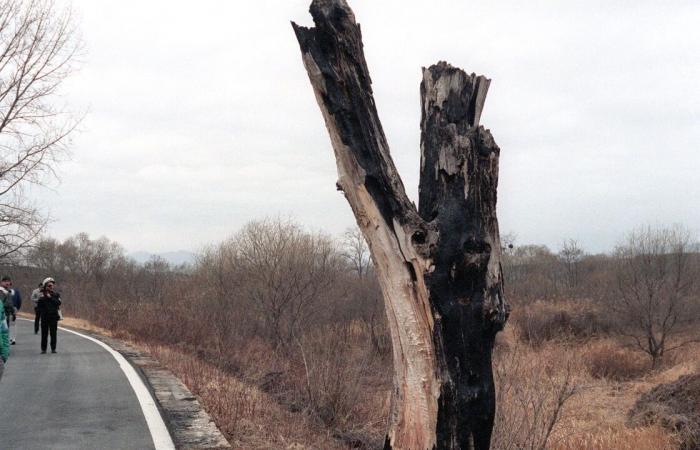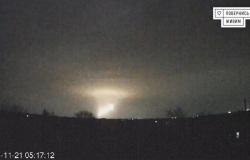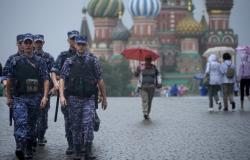A single poplar tree felled in 1976 in the demilitarized zone between the two Koreas nearly tipped the peninsula, and perhaps the entire world, into major conflict. And yes… Here’s why!
When men do not strive to provoke ever more bloody and meaningless conflicts, nature takes over… And in this specific case, it is a tree that must be thrown at! In August 1976, a poplar taking root in the demilitarized zone between the two Koreas almost rocked the world a new war. The incident, known as the “Poplar Incident,” highlighted the extreme tensions that have remained on the peninsula since the 1953 armistice that ended the Korean War. The incident begins precisely August 18, 1976 in the Joint Security Area (JSA)an area under the supervision of the United Nations serving as a diplomatic buffer between South Korea and its northern neighbor – with memories of the war still fresh in people’s minds – when South Korean and American soldiers began to prune a poplar tree that obstructs the view of a strategic observation post. Problem: for the North Korean army, the tree is then a symbol, allegedly planted by Kim Il-sung himself, founder of the North Korean regime. The soldiers from the North, witnesses to the act of this supposed provocation, arrive in numbers and demand immediate cessation of work. Under tension, the tone quickly rises between the two camps.
“Kill them”?
Faced with the refusal of the South Koreans and Americans to stop the slaughter, the North Korean commander issued a brutal order: “kill them”. In a few moments, the situation deteriorates. Two American officers, Arthur Bonifas and Mark Barrett, are targeted. Bonifas is killed with an axwhile Barrett, seriously injured, died shortly after. United Nations observers present on site captured the scene, the images of which broadcast on a large scale provoked an international shock wave. Emotions are running high in the United States, where the brutality of the incident pushes American leaders to consider a firm response. Henry Kissinger, then Secretary of State, suggested airstrikes to prevent Washington from appearing weak in the face of this aggression, but President Ford chose a more strategic response. And fortunately…
Operation Paul Bunyan
Three days after the incident, on August 21, 1976, Operation Paul Bunyan is launched. The objective: cut the poplar while sending a clear message to Pyongyang. The operation mobilizes an impressive array of troops and military equipment. Supported by B-52 bombers and an aircraft carrier, American and South Korean soldiers, armed and ready to intervene, cut down the tree just 42 minutes. The North Koreans, massed on their side, observe the scene without intervening. This coup, which testifies to the American determination not to give in to North Korean provocations, shows to what extent the slightest tension in the demilitarized zone could quickly degenerate into a major armed conflict.
After a tree, a stone
Following this incident, North Korea finally chose to send a message of regretalthough without taking direct responsibility for the attack. In 1987, the tree stump was removed, and a monument is erected to commemorate the two officers killed, for nothing, let’s say it. Today this monument remains a place of memoryreminding us that even a simple tree can crystallize international tensions and highlight the fragility of peace on the Korean peninsula. The poplar incident is unfortunately far from being an isolated case.
This time it’s not a tree, but a pebblethe Persil islet, which a few years ago almost led to a serious conflict between Spain and Morocco…In 2002, Persil Islet, a tiny piece of uninhabited land off the Moroccan coast, suddenly became the subject of a diplomatic crisis between the two countries. On July 11, Moroccan soldiers planted a flag there, arguing for the strategic importance of this stone in the Mediterranean. This act led to an immediate reaction from Spain, which considered the islet as a neutral zone under its historical influence. Madrid sends troops to dislodge the Moroccan soldiers, and for several days, the escalation of tensions raises fears an armed confrontation. Under the mediation of the United States, again, the two countries eventually defused the crisis. Conflicts worthy of the schoolyard.
Sources :
You may also be interested in:
In South Korea, does acid rain really cause hair loss?
In South Korea, the entire population will become one to two years younger by the end of June
The no man’s land between the two Koreas has become a true refuge for biodiversity







